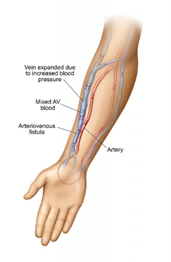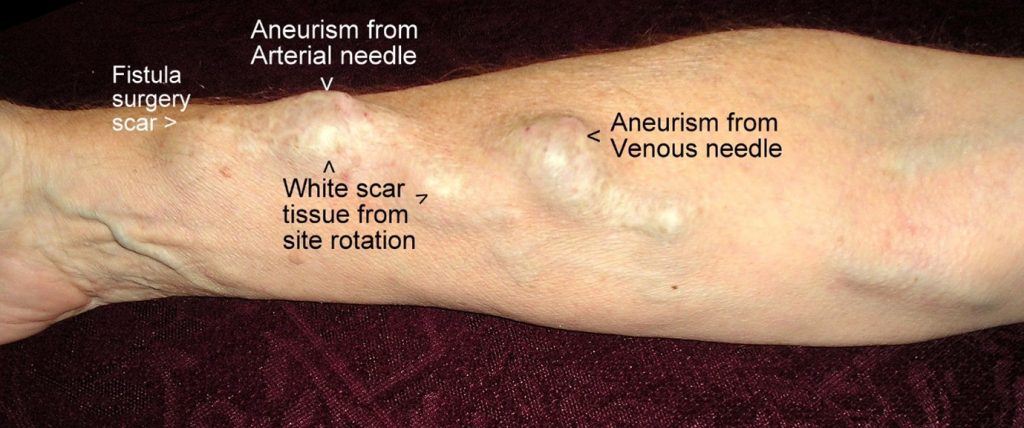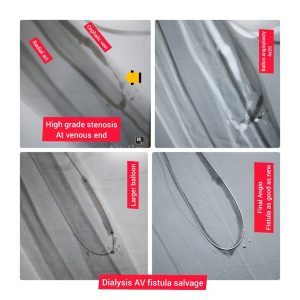Types of Dialysis Access
Haemodialysis HD catheter

-
Easy to establish – OPD procedure
-
Can work from 4 to 6 week
-
High risk of infection
-
Risk of thrombosis/ blockage of jugular vein
-
Either one jugular vein should be preserved for future possible PERMCATH insertion.
Arteriovenous fistula (AV Fistula)

Gold standard when created with surgical precision But You will need to wait several weeks before it can be used so it can fully heal and mature!
Advantages:
- Can function for years
- Not as likely as a catheter to become infected
- Not as likely to clot
Disadvantages:
- May require another temporary type of access during the healing and maturation phase (CVC or PERMCATH)
- Maturation may be delayed, or it may fail to mature
Needles are required to access the AV fistula for haemodialysis
Permcath

Advantages:
- Can work up to 18 months to 24 months with proper port care. After every use it should be flushed with Heparin. Port should not be used for drug delivery or taking blood sample.
- As catheter is tunneled under the skin risk of infection is less.
- No restriction of neck movements.
- Cather is under the shirt-boost patient’s confidence while going public.
What happens when your AV fistula fails?
Sometimes, even when you take the best possible care of your access, there are times when an AV fistula fails. While this can certainly be frustrating and disappointing for the patient, there are fortunately a variety of different treatment options for a malfunctioning or completely failed fistula.
Reason for fistula failure:
- AV fistula stenosis/ narrowing
- Thrombosis/ blood clot
- Draining vein/ Central vein occlusion
- Rupture
- Aneurysm (Needle injury/ flow related)

Trained interventional radiologist with the help of wire and balloon can successfully open the fistula with high success rate with non-surgical procedure.
Once fistula is opened it can be used for dialysis from very next day.
There are limited sites where fistula can be made for dialysis. Hence every opportunity is taken to open the failed fistula rather than creating another fistula.
Dr Prashant Pote who is specially trained in these procedures offers patients initial evaluation of failed fistula with simple Doppler ultrasound and appropriate ways to open it.
If at any time this thrill feels weaker than normal or if the thrill has disappeared entirely, it is important to call your physician
Case 1

This 58 years dialysis patient had fistula in left hand working for 2 years. But since last session of dialysis fistula thrill is missing. Patient consulted to our vascular OPD and evaluated with Doppler ultrasound which showed us why fistula was not working. It is then opened in CATHLAB with the help of wire and balloon, no surgery. Patient fistula was then ready to use from next day.
Case 2
This 46 years gentleman had fistula in right had working for 4 years. In last month he noticed swelling at routine needle puncture site. Thing went unnoticed till fistula was no longer working and there was no thrill. We evaluated patient and found swelling is a pseudoaneurysm with blood clot. With endovascular technique we dissolved the clot in vessel and opened the occluded vessel with balloon angioplasty.
